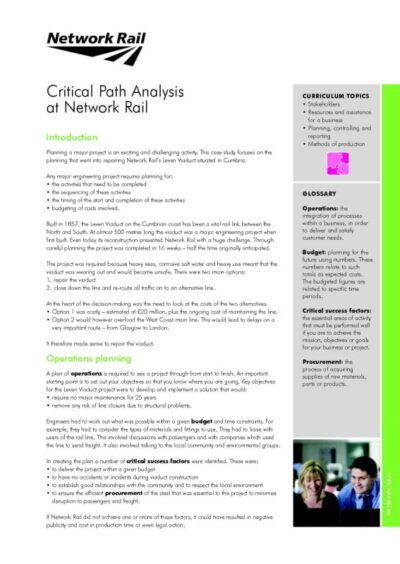In the contemporary landscape of data-driven decision-making, advanced analytics has emerged as a pivotal tool for organisations seeking to harness the power of their data. Unlike traditional analytics, which primarily focuses on descriptive statistics and basic reporting, advanced analytics delves deeper into data, employing sophisticated techniques such as predictive modelling, machine learning, and artificial intelligence. This evolution in analytical capabilities allows businesses to uncover hidden patterns, forecast future trends, and make informed decisions that can significantly enhance their competitive edge.
The proliferation of big data has catalysed the need for advanced analytics. With vast amounts of information generated daily from various sources—ranging from social media interactions to transactional data—organisations are inundated with data that can be both a boon and a burden. Advanced analytics provides the methodologies and tools necessary to sift through this complexity, enabling businesses to extract actionable insights that drive strategic initiatives.
As organisations increasingly recognise the value of data as a strategic asset, the adoption of advanced analytics is becoming not just beneficial but essential for sustained growth and innovation.
Summary
- Advanced analytics involves using complex techniques and tools to analyse and interpret data to make informed business decisions.
- Advanced analytics plays a crucial role in helping businesses gain insights, identify trends, and make predictions to improve performance and drive growth.
- The key components of advanced analytics include data mining, predictive modelling, machine learning, and artificial intelligence.
- Implementing advanced analytics can lead to improved decision-making, increased efficiency, cost reduction, and competitive advantage.
- Common applications of advanced analytics include customer segmentation, demand forecasting, risk management, and fraud detection.
Understanding the Role of Advanced Analytics in Business
Advanced analytics plays a transformative role in business by enabling organisations to make data-driven decisions that are both timely and relevant. By leveraging complex algorithms and statistical models, businesses can analyse historical data to identify trends and patterns that inform future strategies. For instance, a retail company might use advanced analytics to assess customer purchasing behaviour over time, allowing them to tailor marketing campaigns and optimise inventory management based on predicted demand.
Moreover, advanced analytics facilitates a shift from reactive to proactive decision-making. Instead of merely responding to past events, organisations can anticipate future scenarios and prepare accordingly. For example, in the financial sector, banks utilise predictive analytics to assess credit risk by analysing customer data and transaction histories.
This proactive approach not only mitigates potential losses but also enhances customer satisfaction by providing tailored financial products that meet individual needs.
The Key Components of Advanced Analytics
The foundation of advanced analytics comprises several key components that work synergistically to deliver insights. Firstly, data collection is paramount; organisations must gather relevant data from diverse sources, including internal databases, external datasets, and real-time streams. This data can be structured or unstructured, encompassing everything from numerical values to text and images.
The ability to integrate and manage this data effectively is crucial for successful analysis. Secondly, data preparation is an essential step in the advanced analytics process. This involves cleaning, transforming, and organising the data to ensure its quality and relevance.
Techniques such as data normalisation, deduplication, and outlier detection are employed to enhance the dataset’s integrity. Following preparation, the analytical phase utilises various methodologies, including statistical analysis, machine learning algorithms, and simulation techniques. Each method serves a specific purpose; for instance, machine learning can uncover complex relationships within large datasets that traditional statistical methods might overlook.
The Benefits of Implementing Advanced Analytics
Implementing advanced analytics offers a multitude of benefits that can significantly impact an organisation’s performance. One of the most notable advantages is improved decision-making capabilities. By providing deeper insights into customer behaviour, market trends, and operational efficiencies, advanced analytics empowers leaders to make informed choices that align with their strategic objectives.
For example, companies like Amazon leverage advanced analytics to personalise customer experiences based on browsing history and purchase patterns, resulting in increased sales and customer loyalty. Additionally, advanced analytics enhances operational efficiency by identifying inefficiencies and optimising processes. In manufacturing, predictive maintenance powered by advanced analytics can forecast equipment failures before they occur, allowing companies to schedule maintenance proactively and reduce downtime.
This not only saves costs but also extends the lifespan of machinery. Furthermore, organisations can optimise supply chain management by predicting demand fluctuations and adjusting inventory levels accordingly, thereby minimising waste and maximising profitability.
Common Applications of Advanced Analytics
The applications of advanced analytics span across various industries, each harnessing its capabilities to address specific challenges and opportunities. In healthcare, for instance, advanced analytics is utilised to improve patient outcomes through predictive modelling. By analysing patient data, healthcare providers can identify individuals at risk of developing chronic conditions and implement preventative measures tailored to their needs.
This not only enhances patient care but also reduces healthcare costs by minimising hospital admissions. In the realm of marketing, businesses employ advanced analytics to refine their targeting strategies. By analysing consumer behaviour and preferences through social media interactions and online activity, companies can create highly personalised marketing campaigns that resonate with their audience.
For example, Netflix uses advanced analytics to recommend content based on viewing history and user ratings, thereby increasing viewer engagement and retention rates. Similarly, financial institutions apply advanced analytics for fraud detection by monitoring transaction patterns in real-time to identify anomalies indicative of fraudulent activity.
Challenges and Limitations of Advanced Analytics
Despite its numerous advantages, the implementation of advanced analytics is not without challenges. One significant hurdle is the complexity of data integration. Organisations often struggle with disparate data sources that may be incompatible or poorly structured.
This fragmentation can hinder the ability to conduct comprehensive analyses and derive meaningful insights. Additionally, ensuring data quality is paramount; inaccurate or incomplete data can lead to erroneous conclusions that adversely affect decision-making. Another challenge lies in the skills gap within organisations.
Advanced analytics requires a blend of expertise in statistics, programming, and domain knowledge. Many businesses face difficulties in recruiting or training personnel with the requisite skills to effectively utilise advanced analytical tools. Furthermore, there is often resistance to change within organisational cultures that have traditionally relied on intuition or experience rather than data-driven insights.
Overcoming these cultural barriers is essential for fostering an environment where advanced analytics can thrive.
How to Get Started with Advanced Analytics
Embarking on the journey towards advanced analytics necessitates a strategic approach that begins with defining clear objectives aligned with business goals. Organisations should identify specific problems they wish to address or opportunities they aim to exploit through advanced analytical techniques. This clarity will guide the selection of appropriate tools and methodologies.
Next, investing in the right technology infrastructure is crucial for supporting advanced analytics initiatives. This may involve adopting cloud-based solutions that offer scalability and flexibility or implementing specialised software for data analysis and visualisation. Additionally, fostering a culture of data literacy within the organisation is essential; employees at all levels should be encouraged to engage with data and understand its implications for their roles.
Training existing staff or hiring skilled professionals who possess expertise in data science and analytics will further bolster an organisation’s capabilities. Collaborating with external partners or consultants can also provide valuable insights and accelerate the implementation process. Ultimately, a phased approach that allows for iterative learning and adaptation will enable organisations to refine their analytical strategies over time.
The Future of Advanced Analytics
As technology continues to evolve at an unprecedented pace, the future of advanced analytics promises even greater advancements in capabilities and applications. The integration of artificial intelligence (AI) and machine learning into analytical processes will enable organisations to automate complex analyses and derive insights at an unprecedented scale. This shift will not only enhance efficiency but also democratise access to advanced analytics across various organisational levels.
Moreover, the rise of real-time analytics will transform how businesses operate by allowing them to respond instantaneously to changing market conditions or customer behaviours. As streaming data becomes more prevalent through IoT devices and social media platforms, organisations will be able to leverage this information for immediate decision-making. Ethical considerations surrounding data privacy and security will also shape the future landscape of advanced analytics.
As regulations become more stringent regarding data usage, organisations must navigate these complexities while ensuring they maintain consumer trust. Balancing innovation with ethical responsibility will be paramount as businesses strive to harness the full potential of advanced analytics in a rapidly changing world. In conclusion, advanced analytics stands as a cornerstone of modern business strategy, offering profound insights that drive decision-making across various sectors.
As organisations continue to embrace this powerful toolset, they will unlock new opportunities for growth while navigating the challenges inherent in a data-rich environment.
Advanced analytics is a crucial tool for businesses looking to gain a competitive edge in today’s data-driven world. According to a recent article on businesscasestudies.co.uk, mastering advanced analytics can help companies make more informed decisions, improve operational efficiency, and drive innovation. By leveraging advanced analytics techniques such as predictive modelling and data mining, businesses can unlock valuable insights from their data and stay ahead of the curve.
FAQs
What is advanced analytics?
Advanced analytics refers to the use of complex techniques and tools to analyze and interpret data in order to uncover deeper insights, make predictions, and drive informed decision-making. It goes beyond traditional analytics by using advanced statistical and mathematical methods, machine learning, and artificial intelligence to extract valuable information from large and complex data sets.
What are the key components of advanced analytics?
The key components of advanced analytics include statistical analysis, predictive modeling, data mining, machine learning, and artificial intelligence. These components enable organisations to gain a deeper understanding of their data, identify patterns and trends, and make accurate predictions about future outcomes.
How is advanced analytics different from traditional analytics?
Advanced analytics differs from traditional analytics in its use of more sophisticated techniques and tools to analyze data. While traditional analytics focuses on descriptive and diagnostic analysis, advanced analytics goes further by incorporating predictive and prescriptive analysis to anticipate future trends and recommend actions.
What are the benefits of using advanced analytics?
The benefits of using advanced analytics include improved decision-making, enhanced operational efficiency, better risk management, increased competitive advantage, and the ability to uncover valuable insights that may not be apparent through traditional analysis methods. Advanced analytics can also help organisations identify new opportunities and optimize their business processes.
How is advanced analytics used in business?
In business, advanced analytics is used to gain a deeper understanding of customer behaviour, optimize marketing strategies, improve supply chain management, enhance risk assessment, and drive innovation. It can also be applied to various industries such as finance, healthcare, retail, and manufacturing to improve overall performance and achieve strategic objectives.
 Critical Path Analysis at Network Rail (PDF)
Critical Path Analysis at Network Rail (PDF)  Using colour in new product development (PDF)
Using colour in new product development (PDF) 

